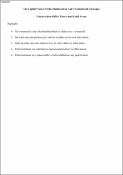Options
The capital value of pedestrianization in Asia's commercial cityscape: Evidence from office towers and retail streets
Author(s)
Date Issued
2021-06
Date Available
2024-02-26T16:20:56Z
Abstract
Asian cities have increasingly been promoting the creation of walkable built environments as a catalyst for local economic development in global competition. However, the economic influences of pedestrianization are still debatable without sufficient quantitative assessments in Asia's commercialized cityscape along with mega-rail projects, high-rise buildings, and traffic-choked streets. This research examines the net capitalization effects of skywalk network and pedestrian zone schemes on office towers and retail streets using the case of Hong Kong. The sets of hedonic regression models in a quasi-experimental research framework show mixed results. The expansion of skywalk networks produced positive capitalization effects on podium-level office units connected by footbridges near metro rail exits, while having insignificant impacts on street-level retail units. The models also reveal that the implementation of pedestrian zone schemes generated insignificant capitalization effects on street-level retail units regardless of rail proximity. The evidence gives some credence to the notion that the creation of walkable built environments in Asian cities would contribute to capital accumulation through mega-rail plus international office tower projects. However, the findings also infer that pedestrianization initiatives in global competition would lead to neither commercial revitalization nor gentrification on local retail streets around metro rail stations.
Type of Material
Journal Article
Publisher
Elsevier
Journal
Transport Policy
Volume
107
Start Page
72
End Page
86
Copyright (Published Version)
2021 Elsevier
Language
English
Status of Item
Peer reviewed
ISSN
0967-070X
This item is made available under a Creative Commons License
File(s)
Loading...
Name
20210312_JTRP-D-20-00079_R1 copy.pdf
Size
4.18 MB
Format
Adobe PDF
Checksum (MD5)
3dc67503349178d0c1c6c60a1fdec0e4
Owning collection